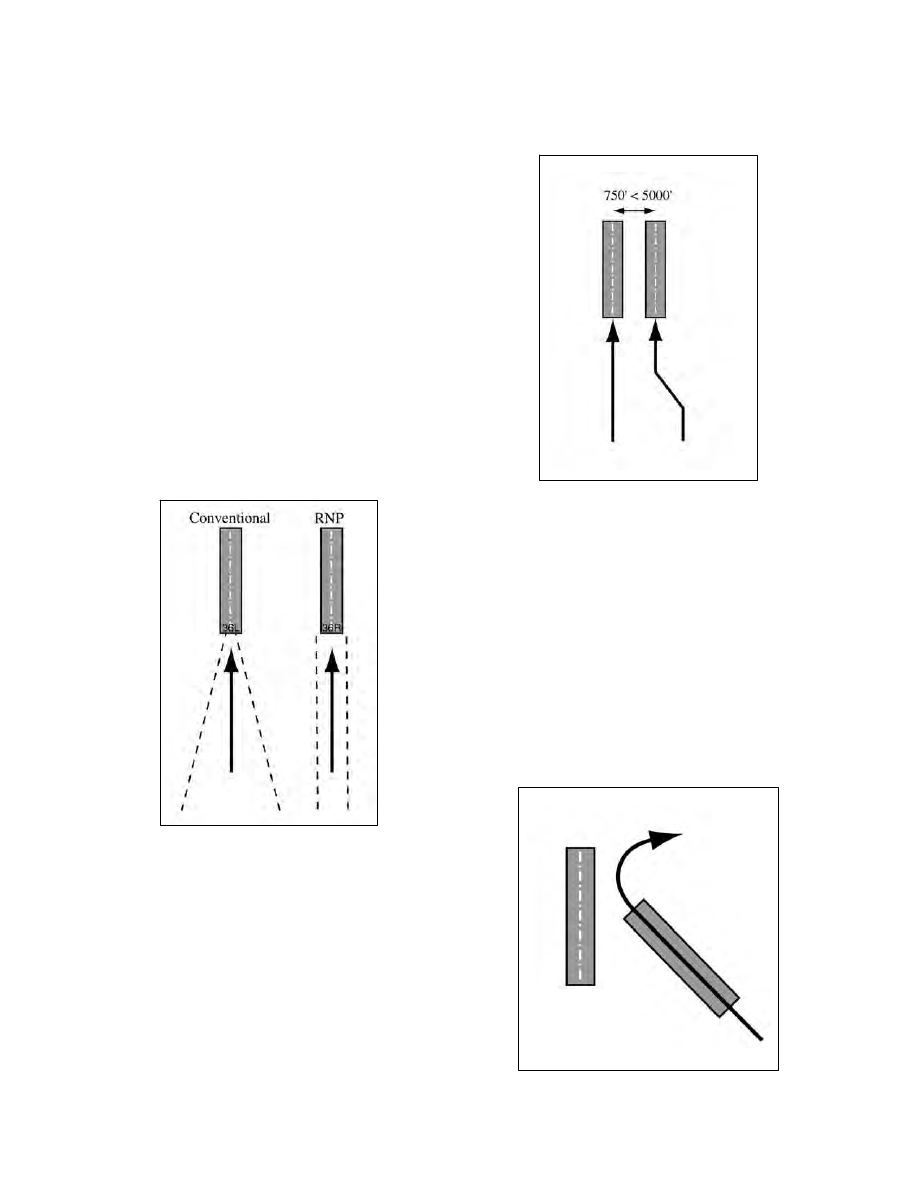
AIM
4/3/14
5−4−50
Arrival Procedures
b. Types of RNP AR Approach Operations
1. RNP Stand
−alone Approach Operations.
RNP AR procedures can provide access to runways
regardless of the ground−based NAVAID
infrastructure, and can be designed to avoid
obstacles, terrain, airspace, or resolve environmental
constraints.
2. RNP Parallel Approach (RPA)
Operations.
RNP AR procedures can be used for
parallel approaches where the runway separation is
adequate (See FIG 5−4−24). Parallel approach
procedures can be used either simultaneously or as
stand−alone operations. They may be part of either
independent or dependent operations depending on
the ATC ability to provide radar monitoring.
FIG 5
−4−24
3. RNP Parallel Approach Runway
Transitions (RPAT) Operations.
RPAT
approaches begin as a parallel IFR approach
operation using simultaneous independent or
dependent procedures. (See FIG 5−4−25). Visual
separation standards are used in the final segment of
the approach after the final approach fix, to permit the
RPAT aircraft to transition in visual conditions along
a predefined lateral and vertical path to align with the
runway centerline.
FIG 5
−4−25
4. RNP Converging Runway Operations.
At
airports where runways converge, but may or may not
intersect, an RNP AR approach can provide a precise
curved missed approach path that conforms to aircraft
separation minimums for simultaneous operations
(See FIG 5−4−26). By flying this curved missed
approach path with high accuracy and containment
provided by RNP, dual runway operations may
continue to be used to lower ceiling and visibility
values than currently available. This type of
operation allows greater capacity at airports where it
can be applied.
FIG 5
−4−26